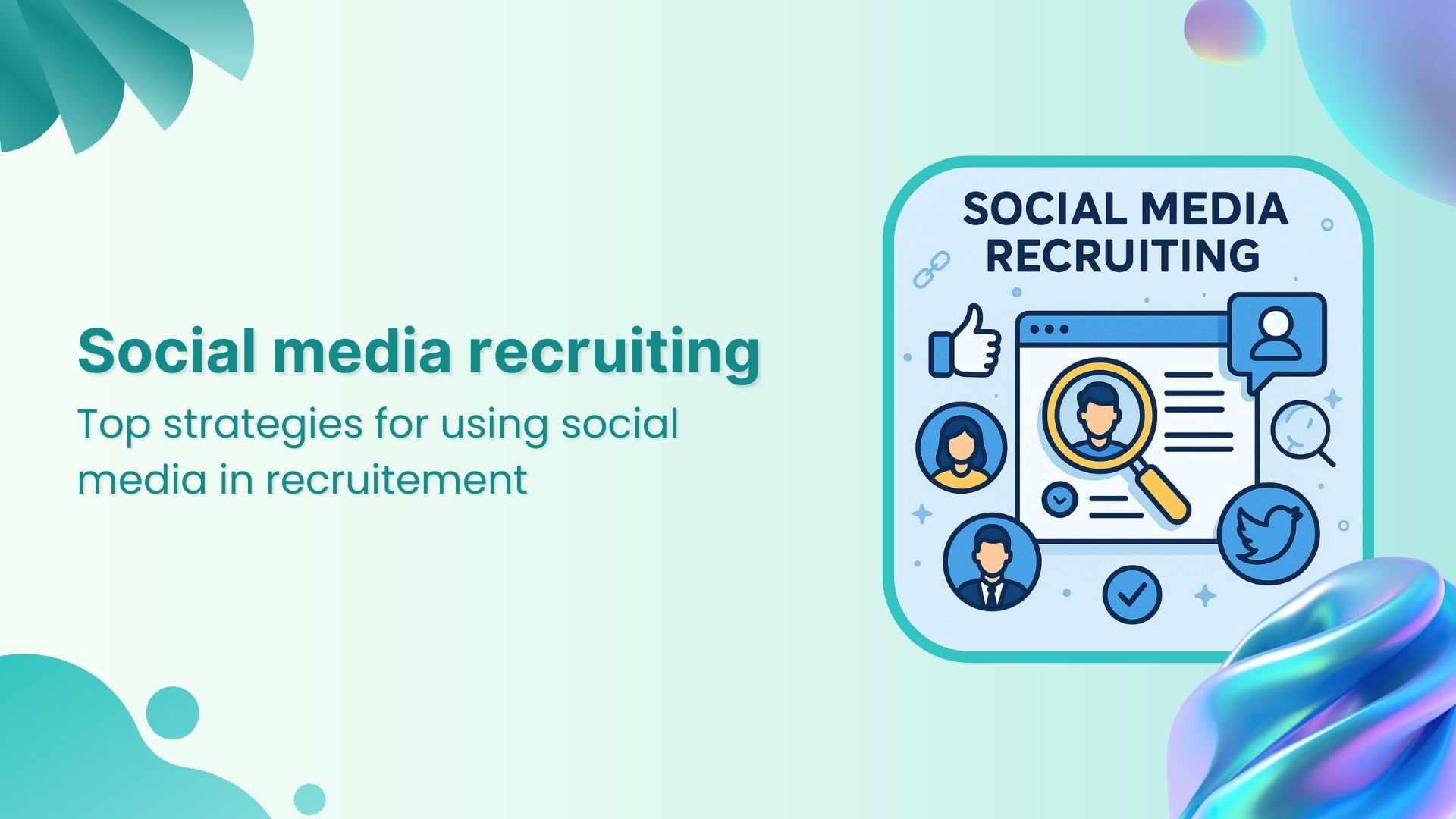Eighty-seven percent of professionals agree that finding the right person for a job isn’t what it used to be. This shift has made recruitment more challenging and competitive.
Traditional recruiting methods are no longer sufficient in terms of attracting top talent. Social media recruiting has emerged as a vital strategy for companies seeking to attract top talent.
With approximately 4.9 billion social media users globally, platforms like LinkedIn, Facebook, and Instagram offer unparalleled reach and targeting capabilities. These platforms have become essential tools for recruiters, enabling them to connect with both active and passive candidates more effectively.
LinkedIn Marketing
Establish your brand’s profile on LinkedIn by consistently posting engaging content and engaging with the community.
Get Started for FREE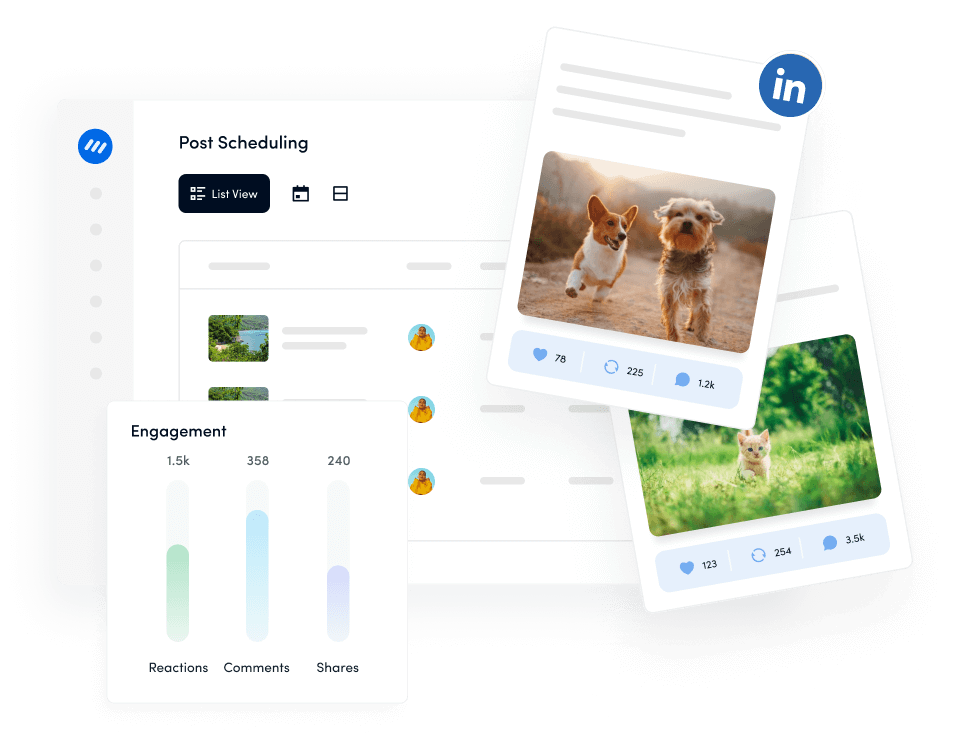
What is social media recruiting?
Social media recruiting refers to the practice of using social media platforms to identify, engage, and hire talent. Companies utilize platforms like LinkedIn, Facebook, Twitter (X), and Instagram to post job openings, interact with potential candidates, and promote their employer brand. This method is increasingly popular due to its efficiency and reach.
For example, with over 58.4 million companies listed and more than 15 million open job listings, LinkedIn is a crucial platform, utilized by 72% of recruiters during their recruitment process.
Social media recruiting is not limited to just posting job openings. It also includes sharing content that reflects the company’s culture, values, and work environment. This content helps attract candidates who align with the company’s ethos, leading to better long-term matches.
Why is social media important in recruiting?
- Wider reach
Social media platforms connect employers with a vast pool of potential candidates. Social media offers unparalleled access to job seekers, including those not actively looking for new opportunities. For example, 57% of job seekers use social media to find job opportunities. This broad reach allows companies to tap into a diverse talent pool that traditional methods might miss. Additionally, platforms like LinkedIn, with its 930 million members, are particularly effective for professional networking, enabling recruiters to connect with a large audience quickly.
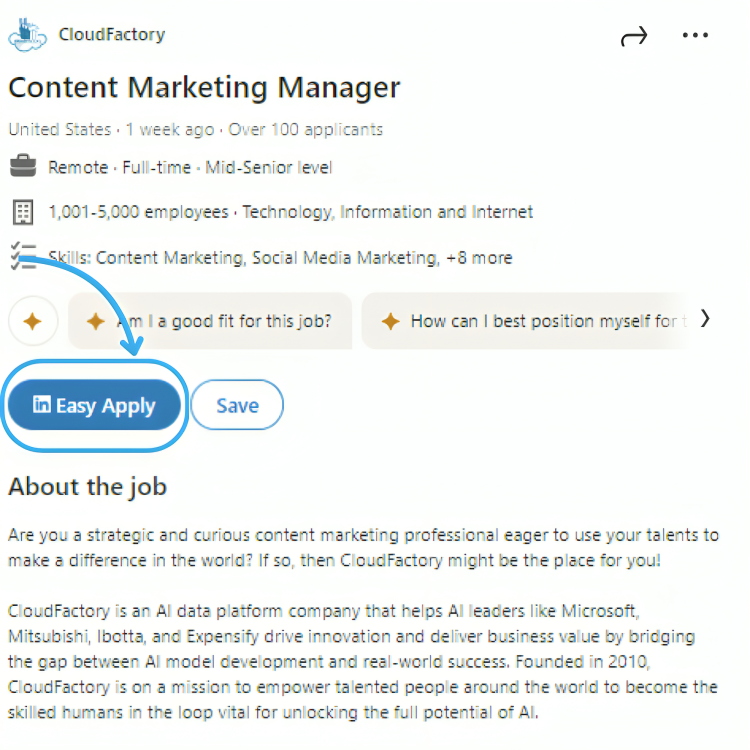
- Improved targeting
Social media provides advanced tools for targeting specific jobseekers based on various criteria, such as location, skills, and interests. This precision ensures that recruitment efforts are focused on candidates who closely match the job requirements.
LinkedIn, for example, offers the LinkedIn Recruiter tool, which allows recruiters to search for candidates using over 40 advanced search filters, keywords, and Boolean queries. This enables companies to source talent from the world’s largest professional network and prioritize candidates who are more likely to respond, making the recruitment process more efficient and effective.
- Cost-effectiveness
Social media recruitment is more cost-effective than traditional methods like print advertising or third-party agencies. Utilizing platforms like Facebook and LinkedIn can significantly reduce recruitment costs by leveraging online communication tools, which are often free or low-cost. According to studies, 84% of organizations use social media for recruitment, benefiting from reduced expenses related to job postings and candidate sourcing. Companies can also take advantage of social media advertising, which is generally more affordable and targeted than other forms of advertising, further lowering recruitment costs.
- Enhanced employer branding
Social media allows companies to showcase their culture, values, and achievements to potential candidates. A strong online presence enhances a company’s reputation, making it more attractive to top talent.
For example, 94% of recruiters use social media to discuss their company culture and achievements, helping to attract candidates who align with the organization’s values. Platforms like Instagram and LinkedIn are particularly effective for sharing stories and testimonials, which can give candidates a better understanding of what it’s like to work at the company. This helps in creating a positive employer brand that resonates with potential hires.
- Networking opportunities
Social media platforms are excellent for professional networking, allowing recruiters to connect with potential candidates and industry professionals. This networking is not limited to job postings; recruiters can engage with candidates through discussions, groups, and forums.
For example, LinkedIn groups and Facebook communities are valuable resources for recruiters to engage with professionals in specific industries or fields, helping them build relationships with potential candidates before a job opening even arises.

- Flexibility and global reach
Social media recruitment offers flexibility in adapting to changing jobseeker behaviors and market trends. As jobseekers increasingly use platforms like TikTok and Instagram for professional purposes, recruiters can adjust their strategies accordingly. For example, 80% of employers agree that social media recruitment helps them find passive candidates, those who are not actively seeking jobs but may be open to new opportunities.
Additionally, social media provides a global platform, enabling companies to connect with candidates from different parts of the world, thereby building a more inclusive workforce. This global reach is particularly important for companies looking to hire talent from diverse backgrounds.
10 best practices for using social media in recruiting
1. Optimize your company’s social media profile
Start by ensuring your company’s social media profiles are fully optimized. This includes using high-quality logo and banner images and consistent branding across platforms. Make sure your call-to-action (CTA) is clear, whether it’s “Visit Website,” “Contact Us,” or “Register.”
Include relevant keywords to improve your profile’s search engine visibility, and fill out all the necessary details, such as location, industry, and company size. Platforms like LinkedIn offer additional features like the “Jobs” tab and sections for Life, Products, and Insights, which should be fully utilized to attract the right candidates.
2. Create content that showcases your culture
Content is key to attracting top talent. Instead of cluttering your social media pages with endless job posts, focus on creating content that highlights your company’s achievements, culture, and perks. Share stories that reflect your company’s values and work environment. For instance, Intercom’s approach of sharing employee experiences and company culture through video content effectively communicates what it’s like to work at the company, making it more appealing to potential candidates.
3. Engage employees in the recruiting process
Leverage your employees’ social networks to extend the reach of your recruitment efforts. Employee advocacy can attract higher-quality candidates, as employees often interact with professionals in their field.
Assigning specific engagement activities, such as sharing job posts, to employees at scale increases the visibility of job openings and helps maintain a consistent brand message across all channels.
4. Help employees develop their content strategies
Encourage employees, especially key executives, to build their personal brands on social media. Providing guidance on creating content that resonates with their audience can enhance their online presence and attract potential candidates.
Teach them to share insights from personal experiences, engage with other thought leaders, and join relevant groups. Consistency is crucial, so consider using tools like ContentStudio to schedule posts and ensure regular content publication. Below’s an example of a LinkedIn post shared by a CEO of a company that teaches a valuable lesson through a personal experience.
5. Optimize job posts for maximum visibility
When sharing job openings, use relevant and specific hashtags to reach the right audience. General hashtags like #hiring or #jobs2024 are useful, but industry-specific hashtags, such as #marketingjobs or #techjobs, can attract more qualified candidates.
Additionally, when asking employees to share job posts, provide clear instructions on what to include in their posts, such as career advancement opportunities or personal experiences at the company. This makes the posts more compelling and increases the likelihood of attracting top talent.
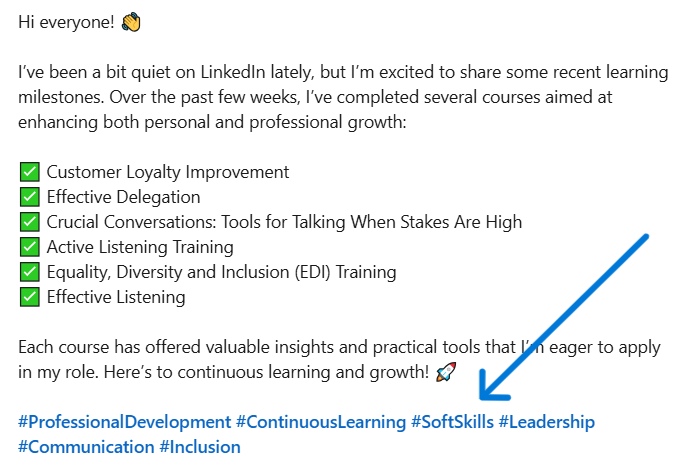
6. Actively reach out to candidates
Beyond attracting candidates, actively seeking out potential applicants on social media can be highly effective. Identify quality candidates by exploring competitors, parallel industries, and companies where you’ve successfully hired before.
Employee referrals and connections are also valuable sources. On LinkedIn, use the People search feature or LinkedIn Recruiter for advanced candidate filtering. When reaching out, use personalized messages that acknowledge the candidate’s experience and express interest in discussing a potential opportunity.
7. Utilize targeted social media ads
Social media ads are powerful tools for reaching the right candidates. By leveraging detailed targeting options on platforms like LinkedIn and Facebook, you can ensure that your job postings reach specific audiences based on factors like age, interests, and job experience.
Retargeting campaigns can re-engage candidates who have previously interacted with your job ads or visited your careers page. Video ads, in particular, provide a dynamic way to showcase your employer brand, offering an immersive experience that can attract high-quality applicants. This strategic use of social media ads maximizes your recruiting budget and improves the chances of finding top talent.
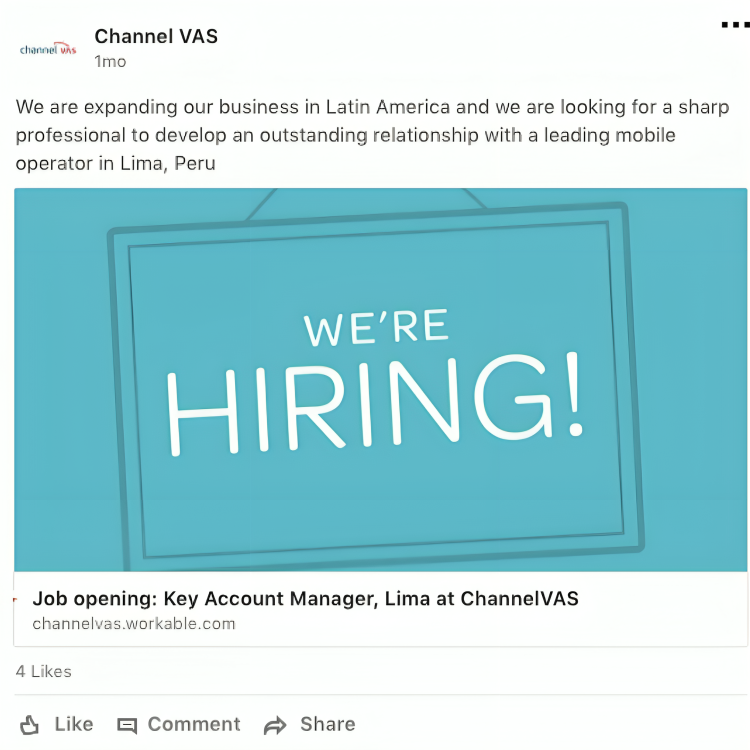
8. Engage in continuous learning and adaptation
It’s crucial to stay updated on the latest trends, tools, and best practices in social recruiting. Attend recruitment conferences, webinars, and industry events to learn from experts and peers. Regularly review your social media strategies and be open to experimenting with new approaches.
For example, consider how emerging technologies like AI-driven content creation or predictive analytics could enhance your recruitment efforts. By continuously learning and adapting, your company can remain competitive and effectively attract top talent in an ever-changing digital environment.
9. Monitor effectiveness
Tracking the performance of your social media recruiting efforts is essential to understand what works. Key metrics include engagement rates, reach, and the number of applications received. However, the ultimate measure of success is the number of hires made through these efforts.
Regularly analyze these metrics to refine your strategy and ensure that your time and resources are being used effectively. ContentStudio can be a valuable tool in this process, as it offers robust analytics features to help you track and optimize your social media campaigns.
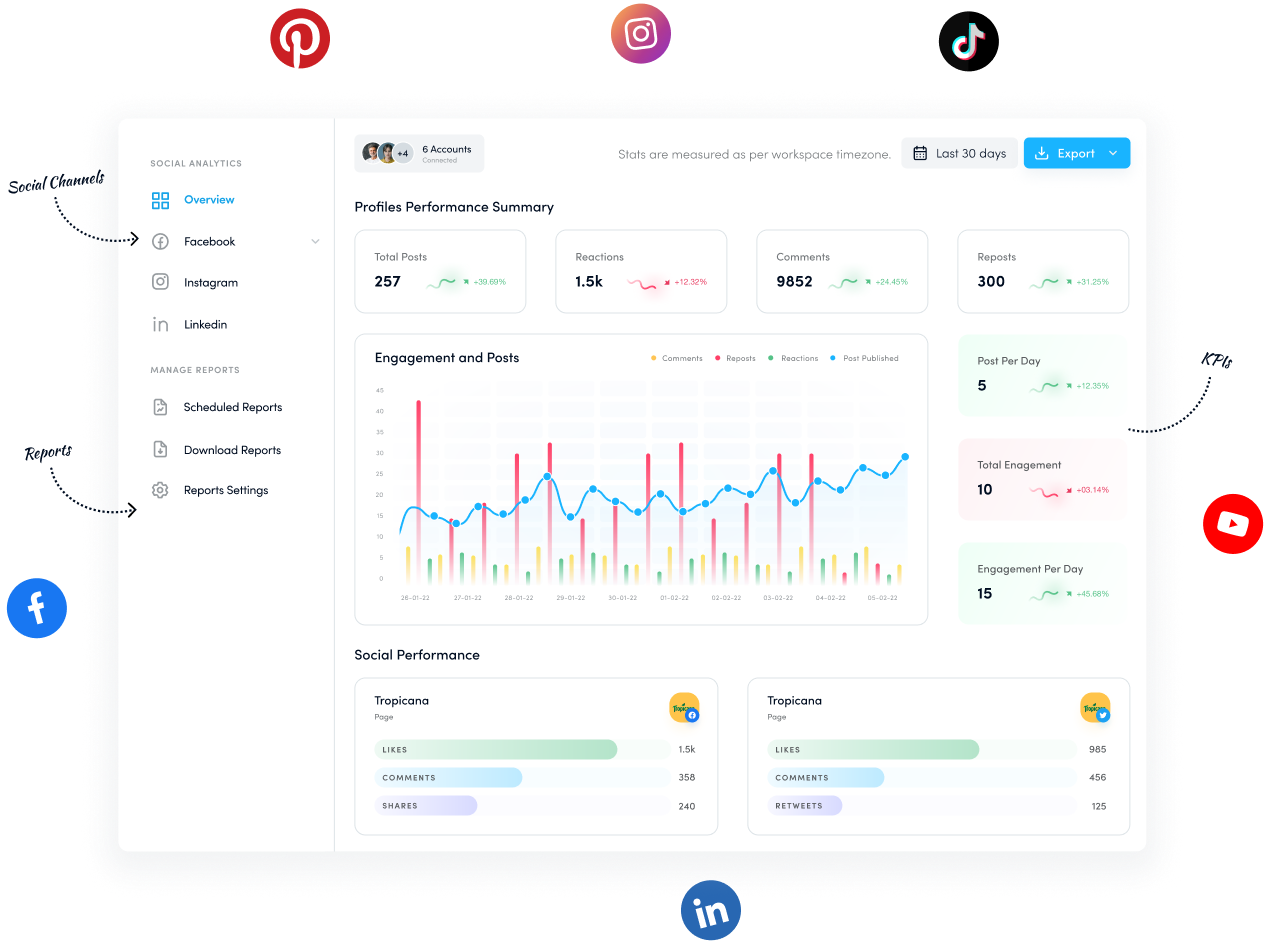
Social Media Analytics
Fine-tune your social media strategy for success with in-depth analytics and white-labeled reports.
Get Started for FREE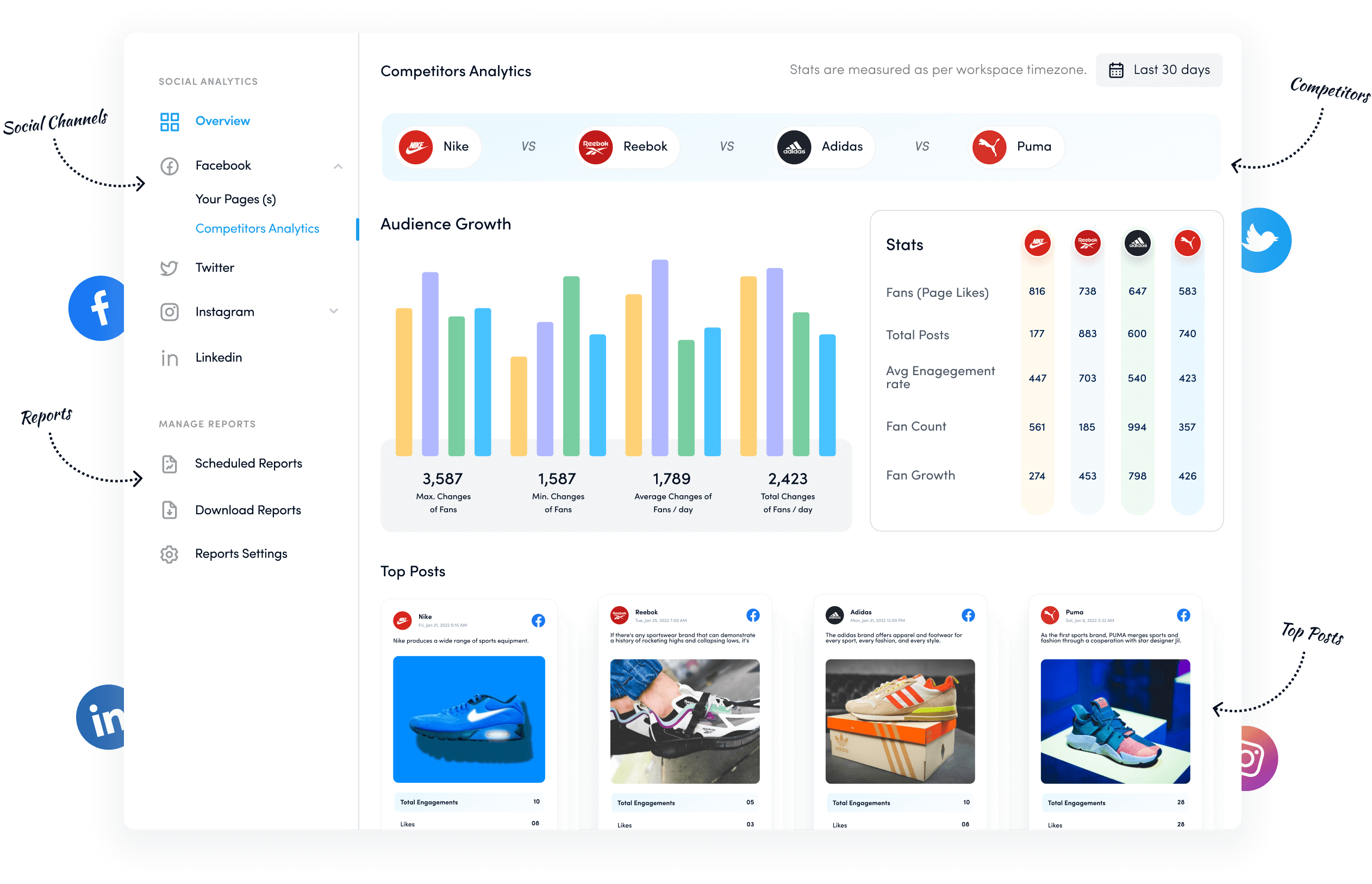
10. Carefully consider emerging platforms
While it’s tempting to jump on the latest social media trends, it’s wise to approach new platforms with caution. Some, like TikTok, have proven to be valuable for recruitment, while others may fade quickly.
Secure your company’s profile on emerging platforms to protect your brand, but wait to see if they gain traction before making them a key part of your strategy. Monitoring trends can help you stay informed and make strategic decisions about which platforms to invest in.
Which social media sites should be used for recruiting?
LinkedIn is widely regarded as the most effective platform for professional recruiting. With its focus on connecting professionals, LinkedIn provides a vast network of candidates, making it a critical tool for talent acquisition.
The platform offers advanced search and filtering options, allowing recruiters to precisely target candidates based on skills, experience, and other criteria. InMail, LinkedIn’s direct messaging feature, enables recruiters to reach out to potential candidates directly, which is particularly useful for engaging passive candidates.
Moreover, LinkedIn supports employer branding through company profiles and analytics, giving organizations the tools to build and maintain a strong online presence. Integrating LinkedIn with an Applicant Tracking System (ATS) or talent CRM can further streamline the recruitment process, making LinkedIn an essential component of a comprehensive recruitment strategy.
Facebook ranks as the second most effective social platform for sourcing high-quality candidates. With over 3 billion monthly users, it offers a vast talent pool and the ability to target ads based on demographics, interests, and behaviors. This targeted approach helps recruiters reach both active job seekers and passive candidates who might not be actively looking but are open to opportunities.
Facebook’s user base is diverse, and its advertising tools are cost-effective, making it an attractive option for reaching a wide audience. The platform’s personal nature encourages higher engagement levels, allowing recruiters to connect with potential candidates on a more informal level. Facebook is especially useful for promoting jobs in industries where candidates might not be using traditional job search platforms.
Facebook Marketing
Manage and grow your brand on Facebook. Create, schedule, and publish posts, videos, and Reels to Facebook pages and groups.
Get Started for FREE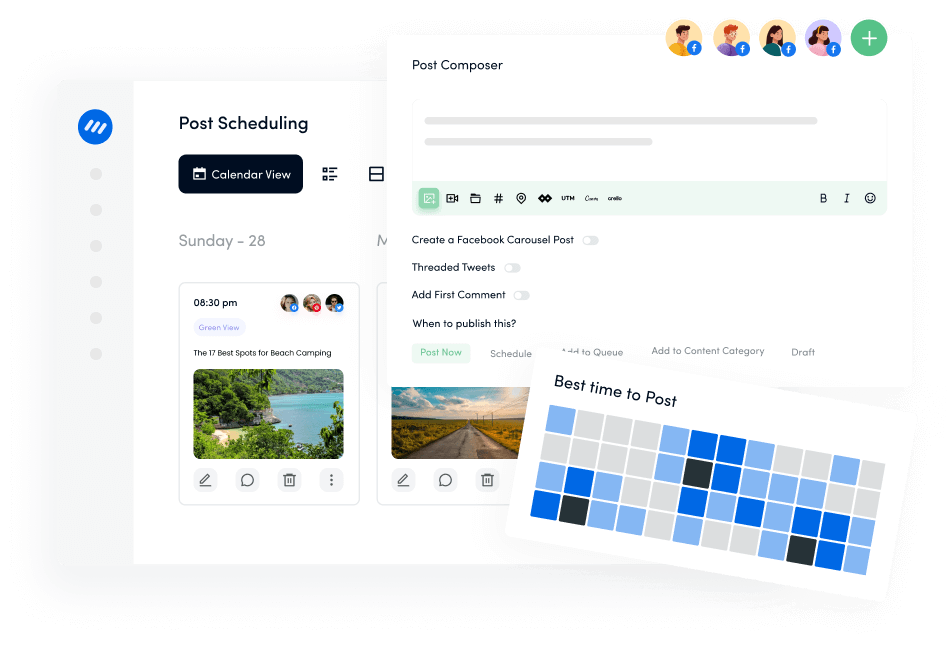
Instagram has emerged as a valuable recruiting tool, particularly for attracting younger generations like Millennials and Gen Z. The platform’s visual nature allows companies to showcase their culture, values, and work environment through engaging content like stories, reels, and posts. Strategic use of hashtags and geotagging further enhances visibility, helping recruiters connect with candidates in specific locations or with particular interests.
Instagram’s strong user engagement makes it an effective platform for both active and passive recruitment. By sharing visually appealing content that highlights what it’s like to work at the company, recruiters can attract candidates who align with the company’s culture. Instagram is particularly beneficial for roles that require creativity or design skills, as it allows candidates to see and interact with the brand’s visual identity.
Instagram Marketing
Schedule your Instagram posts, Reels, and Stories, and get recommended best time to publish for maximum engagement.
Get Started for FREE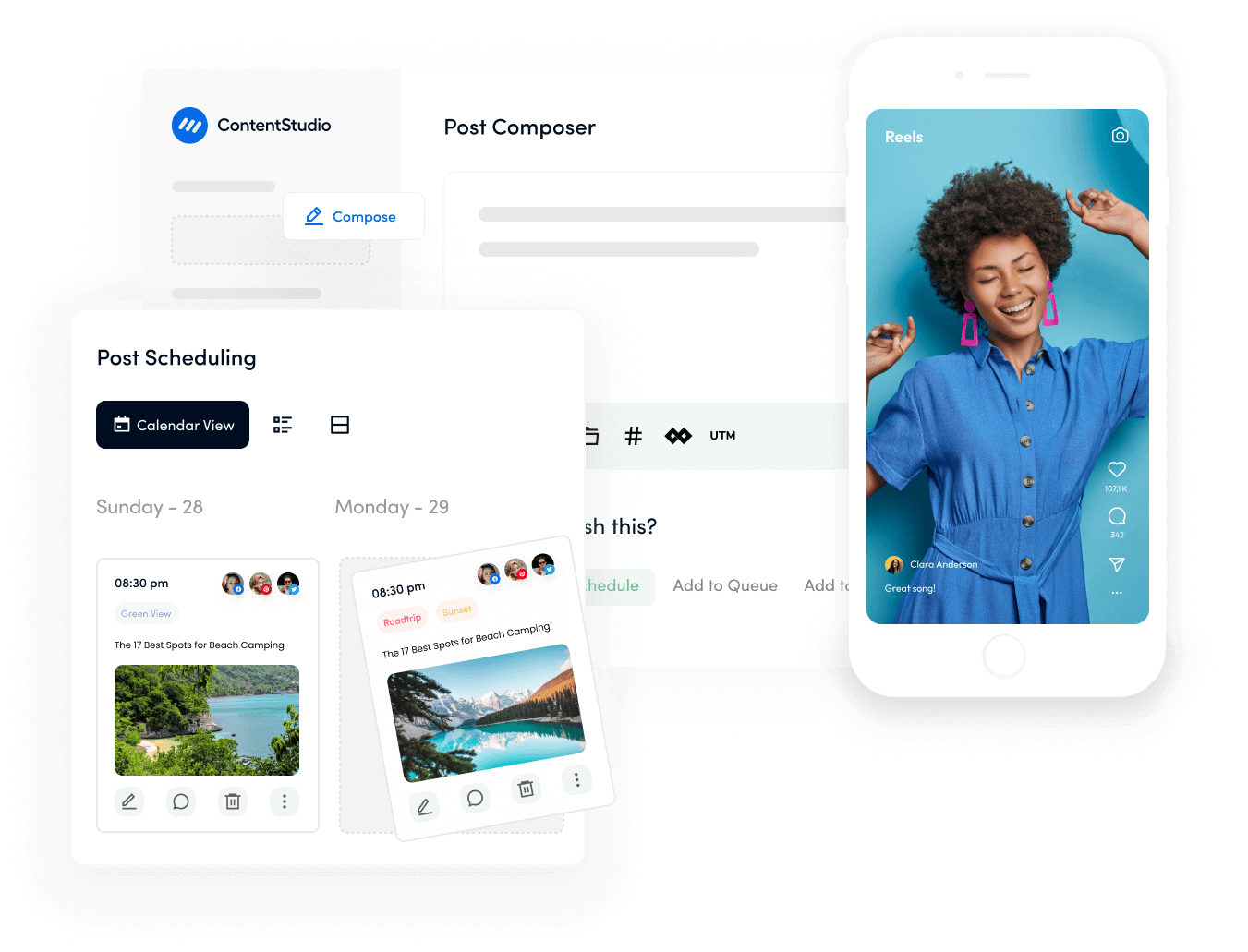
- X (Twitter)
Twitter, now rebranded as X, is another powerful tool for recruiting, especially for real-time engagement and communication. With 450 million active monthly users, Twitter offers a broad and diverse audience, making it useful for sourcing passive candidates and reducing recruitment costs.
The platform’s new X Hiring feature, available to Premium users in the US, allows verified organizations to highlight critical roles on their profiles, expanding their reach to relevant candidates organically.
Twitter’s strength lies in its ability to facilitate direct interactions with potential candidates and its real-time communication capabilities. While it may require a strategic approach and patience, consistent use of Twitter for recruitment can lead to successful outcomes, especially when combined with the platform’s advertising and analytics tools.
X (Twitter) Marketing
Schedule perfectly crafted tweets and manage your X (Twitter) content with a unified content calendar.
Get Started for FREE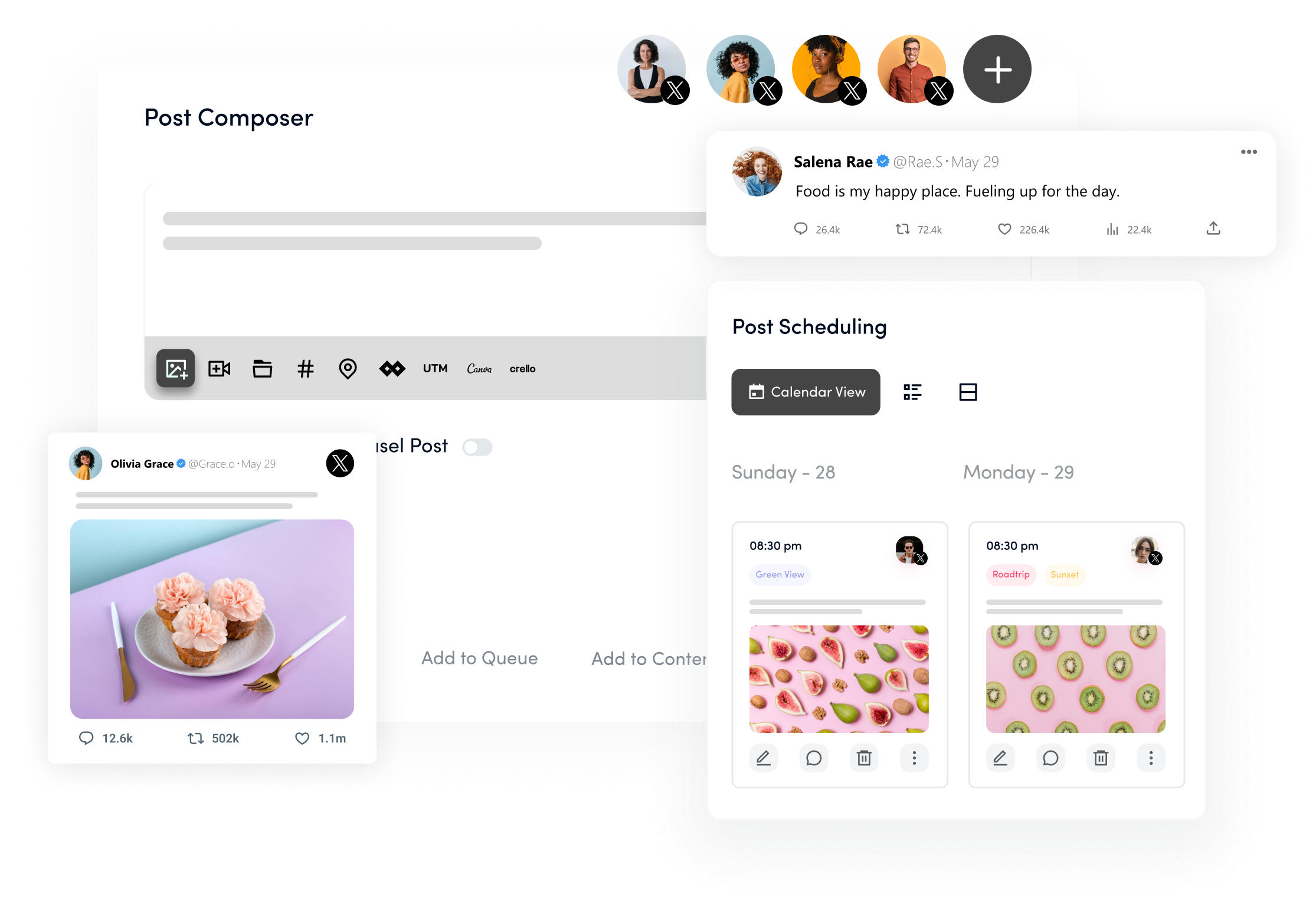
- YouTube
YouTube is the second-largest search engine globally, making it an excellent platform for recruitment, particularly in creative industries. Video content is highly engaging and allows companies to personalize the recruitment process. Through employee testimonials, company culture videos, and detailed job descriptions, recruiters can effectively showcase their brand and attract candidates who resonate with the company’s values.
YouTube is particularly effective for sourcing candidates who need strong presentation skills, as it allows them to demonstrate their abilities through video applications. By creating high-quality and genuine content, companies can enhance their employer branding and connect with a specific audience that aligns with their hiring needs.
Final thoughts
Social media has revolutionized recruiting by offering wide reach, precise targeting, and cost-effective methods. Platforms like LinkedIn, Facebook, Instagram, Twitter, and YouTube provide unique tools to connect with both active and passive candidates effectively. As traditional methods become outdated, leveraging these social platforms is key to building a strong, diverse workforce.
Emerging technologies and platforms will offer new opportunities for recruiters to engage with candidates, making the process even more efficient and personalized. While social media recruiting is powerful, it requires ongoing adaptation and strategy refinement. Recruiters should stay informed about the latest trends and tools, ensuring their approach remains effective and aligned with industry developments.
LinkedIn Marketing
Establish your brand’s profile on LinkedIn by consistently posting engaging content and engaging with the community.
Get Started for FREE
Frequently asked questions
How to do social media recruitment?
Social media recruitment involves posting job openings, engaging with potential candidates, and promoting your employer brand on platforms like LinkedIn, Facebook, and Instagram. Use targeted ads, advanced search features, and employee advocacy to reach both active and passive candidates. Regularly update content to reflect company culture and attract top talent.
What social media is best for recruiting?
LinkedIn is the best platform for professional recruiting, offering advanced search tools, candidate filtering, and direct messaging. Facebook and Instagram are also effective for reaching a broad audience, especially younger generations. Each platform has unique features that can be leveraged depending on your target demographic and industry.
What is a social media recruitment campaign?
A social media recruitment campaign is a targeted effort to attract candidates through social media channels. It involves creating and promoting job posts, using targeted ads, engaging with candidates, and showcasing company culture. The campaign may include videos, testimonials, and other content to build brand awareness and encourage applications.
